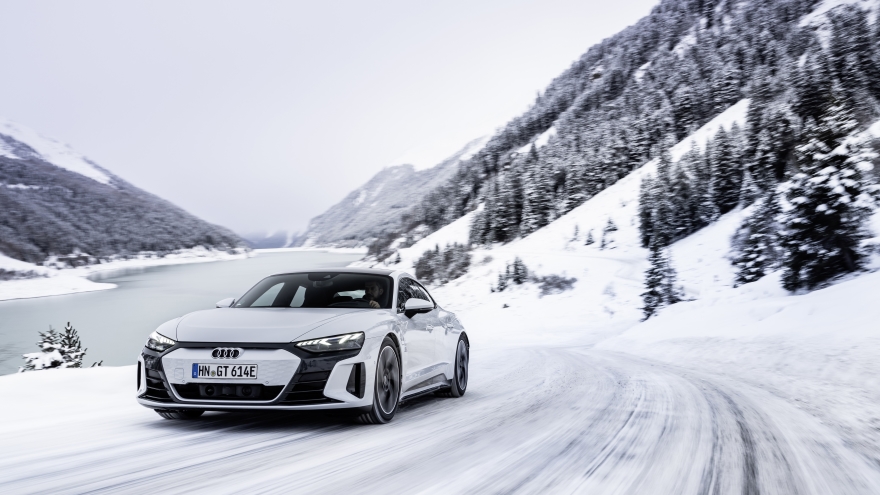Recurrent report shows extent of EV range loss in freezing weather

The Audi e-tron lost just 16% of its optimal range in freezing weather, the best performance among models studied by Recurrent. Image courtesy of Audi AG.
Freezing temperatures can lower the range of battery electric vehicles by 16-46% depending on the make, model and year, according to the annual winter range report from EV analytics firm Recurrent.
The report analyzes 17 popular EV brands in various driving conditions to compare their actual range at freezing temperatures, using range data from more than 10,000 vehicles throughout the nation in Recurrent’s database community, as well as tens of thousands of data points from on-board devices that provide data on energy usage.
The vehicles studied include the Audi e-tron, BMW i3, Chevy Bolt, Chevy Volt, Ford Mustang Mach-E, Ford F-150 Lightning, Hyundai Ioniq 5, Hyundai Kona, Jaguar I-Pace, Kia EV6, Nissan Leaf, Tesla Model 3, Tesla Model Y, Tesla Model S, Tesla Model X, VW e-Golf and VW ID.4.
Audi’s e-tron was the clear winner among the vehicles studied, losing just 16% from its range in ideal temperatures (which varies with each vehicle) when the temperature hits the freezing mark. On the other end of the spectrum, the Volkswagen ID.4 loses 46% of its optimal range in cold weather.
The good news, the report said, is the range loss is temporary and does no long-term damage to the battery. “As the ice melts and the temperatures rise,” the report said, “your vehicle’s range should return to normal.”
Recurrent’s report also found heat pump technology for heating and cooling the cabin is a significant factor in extending EV range, even in temperatures as low as 14 degrees, which the company called “a crucial consideration for individuals residing in colder climates.”
Heat pumps are standard equipment on some EVs, including the e-tron (except the 2023 model, due to the semiconductor shortage), and can be added on others.
In addition to heat pumps, the report recommended other ways EV drivers can reduce winter range loss, including:
— Warming up, or “preconditioning”, the car while it’s still charging, since it takes more energy to warm up a cold car than to keep a warm car warm.
— Turning down the cabin heater once the car is warm and using the heated seats and steering wheel, which use less energy and provide targeted heat.
— Storing the EV plugged in with a maximum charge setting of 70% or 80%. That way, the car can pull energy from the wall to keep warm, rather than using the battery. Otherwise, you may return to a lower battery capacity than expected.
“The lesson here for EV owners is to adapt range expectations during cold weather rather than simply being afraid of winter,” Recurrent head of marketing Andrew Garberson said in a news release. “A trip that requires charging to 70% in September might mean charging to 90% in February. The seasonal fluctuation also continues to be less impactful as manufacturers learn from early models and introduce new technology.”
The report is available here.


